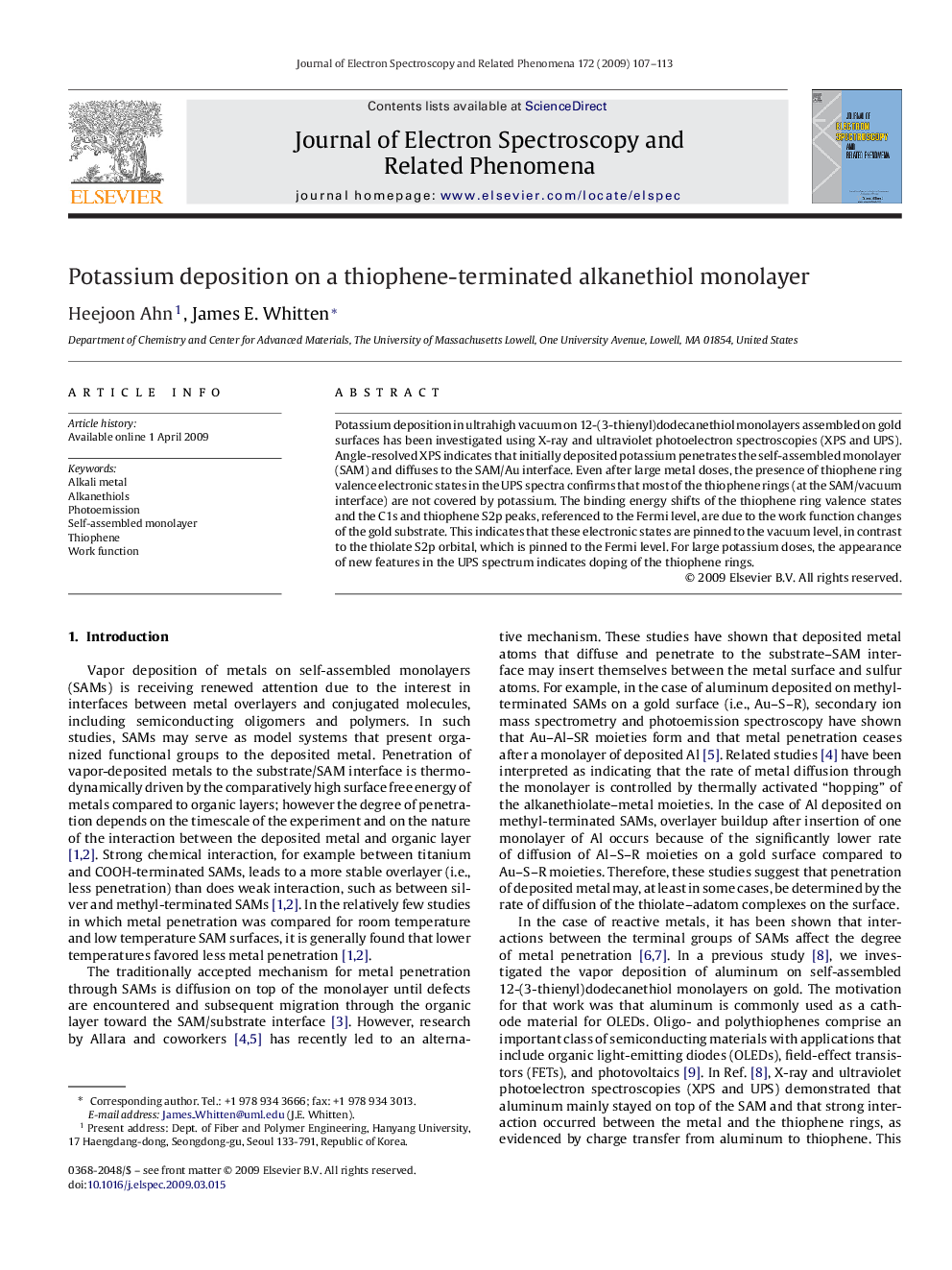| Article ID | Journal | Published Year | Pages | File Type |
|---|---|---|---|---|
| 5396750 | Journal of Electron Spectroscopy and Related Phenomena | 2009 | 7 Pages |
Abstract
Potassium deposition in ultrahigh vacuum on 12-(3-thienyl)dodecanethiol monolayers assembled on gold surfaces has been investigated using X-ray and ultraviolet photoelectron spectroscopies (XPS and UPS). Angle-resolved XPS indicates that initially deposited potassium penetrates the self-assembled monolayer (SAM) and diffuses to the SAM/Au interface. Even after large metal doses, the presence of thiophene ring valence electronic states in the UPS spectra confirms that most of the thiophene rings (at the SAM/vacuum interface) are not covered by potassium. The binding energy shifts of the thiophene ring valence states and the C1s and thiophene S2p peaks, referenced to the Fermi level, are due to the work function changes of the gold substrate. This indicates that these electronic states are pinned to the vacuum level, in contrast to the thiolate S2p orbital, which is pinned to the Fermi level. For large potassium doses, the appearance of new features in the UPS spectrum indicates doping of the thiophene rings.
Related Topics
Physical Sciences and Engineering
Chemistry
Physical and Theoretical Chemistry
Authors
Heejoon Ahn, James E. Whitten,
